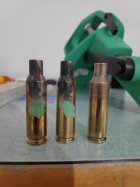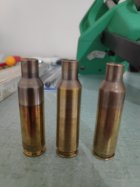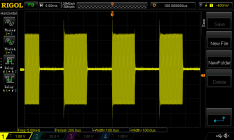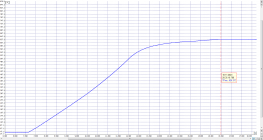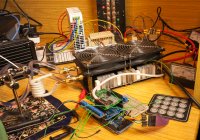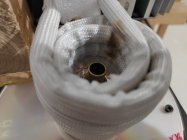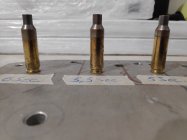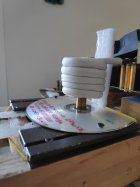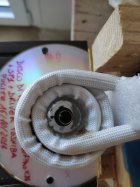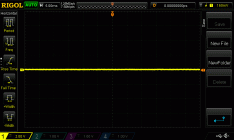Ciao @oliverpsmile , @itchyTF , @Frog !
Using a snubber, if I understand correctly from the info on the forum and those online, is advisable when using a solid state relay, to be placed in parallel to the power terminals of the SSR.
It's correct?
However, having compared the prices of Amazon with those of AliExpress regarding a 120A SSR relay and a 12v 250A mechanical relay, I decided to purchase both on Amazon since I received the components at home within 1 day, even if I spent a few € more.
Now I have both solutions to try.
If I understand correctly, on the SSR it is advisable to put a snubber on the power terminals.
While on the mechanical relay a schottky diode must be placed on the control terminals.
It's correct?
Which relay do I try first?
This is the mechanical relay:
https://www.amazon.com/Continuous-S...=1699538321&sprefix=relay+12v+250,aps,295&sr= 8-5
This one is similar to the SSR I purchased:
https://www.amazon.com/SSR-120DD-3-...s=ssr+120A&qid=1699538440&sprefix=ssr+120a,ap s% 2C346&sr=8-2-spons&sp_csd=d2lkZ2V0TmFtZT1zcF9hdGY&psc=1
This is the snubber I should buy:
https://www.amazon.com/JESSINIE-Abs...38534&sprefix=snubber,aps,284&sr=8-2-spons&sp _csd= d2lkZ2V0TmFtZT1zcF9hdGY&psc=1
What range, of Ampere, should have the Schottky diode?
Thank you
Using a snubber, if I understand correctly from the info on the forum and those online, is advisable when using a solid state relay, to be placed in parallel to the power terminals of the SSR.
It's correct?
However, having compared the prices of Amazon with those of AliExpress regarding a 120A SSR relay and a 12v 250A mechanical relay, I decided to purchase both on Amazon since I received the components at home within 1 day, even if I spent a few € more.
Now I have both solutions to try.
If I understand correctly, on the SSR it is advisable to put a snubber on the power terminals.
While on the mechanical relay a schottky diode must be placed on the control terminals.
It's correct?
Which relay do I try first?
This is the mechanical relay:
https://www.amazon.com/Continuous-S...=1699538321&sprefix=relay+12v+250,aps,295&sr= 8-5
This one is similar to the SSR I purchased:
https://www.amazon.com/SSR-120DD-3-...s=ssr+120A&qid=1699538440&sprefix=ssr+120a,ap s% 2C346&sr=8-2-spons&sp_csd=d2lkZ2V0TmFtZT1zcF9hdGY&psc=1
This is the snubber I should buy:
https://www.amazon.com/JESSINIE-Abs...38534&sprefix=snubber,aps,284&sr=8-2-spons&sp _csd= d2lkZ2V0TmFtZT1zcF9hdGY&psc=1
What range, of Ampere, should have the Schottky diode?
Thank you










